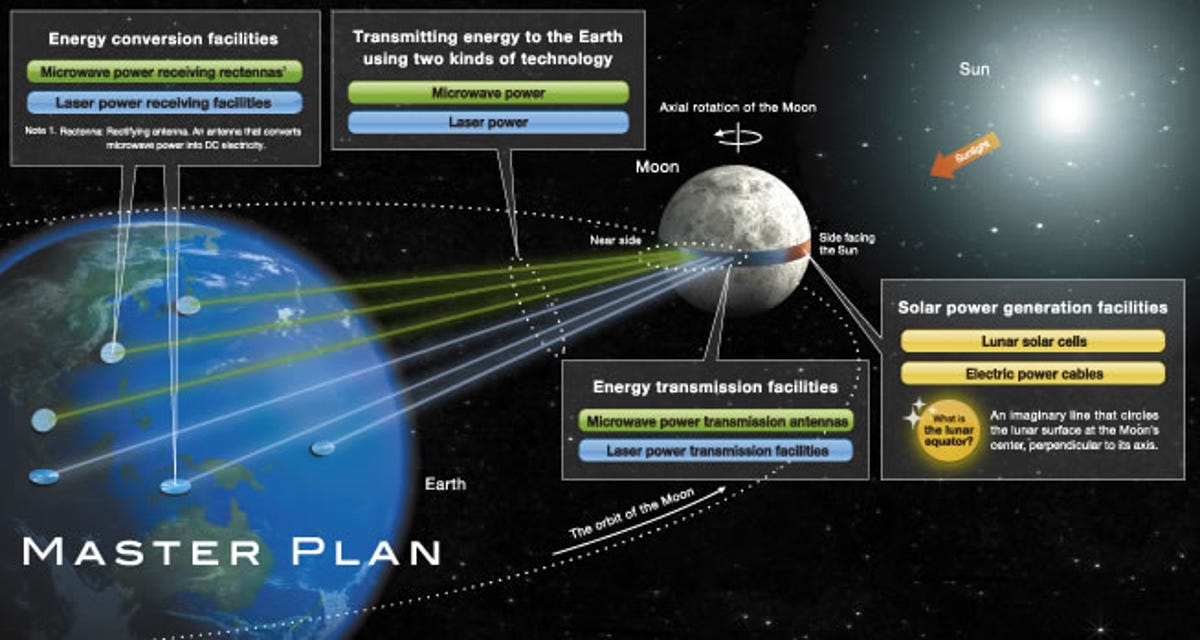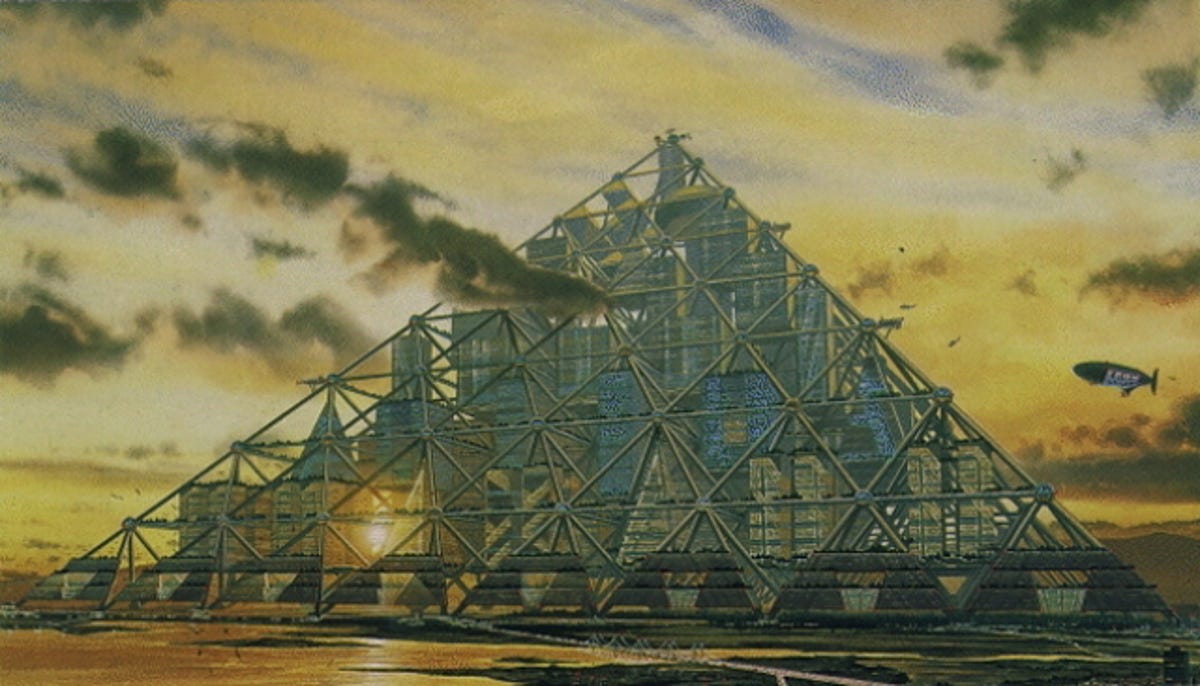From Japan, big dreams of the future (images)
Japanese construction company Shimizu likes to dream big, as in floating-cities big. Here are a few of the company's futuristic ideas.

Luna Ring project
Shimizu's Luna Ring project would turn the moon into a giant solar-power-generating facility. Robots would build a 6,800-mile-long belt of solar panels 250 miles wide that would ring the moon's equator and collect solar energy. Transmission facilities would beam the power as microwave and laser energy to collecting stations on Earth.
Bad weather would not affect power generation and supply would be inexhaustible and pollution-free, according to Shimizu. Just try to ignore that ring around the moon where you're out for a romantic walk.
Read more in our related article: "Japan dreams: Moon solar panels, pyramid cities"
Green Float project
If you can't have your own island in the Pacific, how about sharing a floating city with 50,000 people?
Shimizu's Green Float idea is to build giant lily pad cities out of magnesium alloy trusses that float around the equatorial Pacific. The settlements would absorb more CO2 than they give off through carbon capture technologies. Enjoying year-round temperatures around 80 F, people would live in central towers that are 1,000 meters (3,280 feet) tall, as well as along the shores of the pad, which would also feature abundant forests and vegetation.
The city would run on a combination of space solar power satellites, waves, wind and thermal power. Don't even think of bringing your gas-guzzling motor boat here.
Read more in our related article: "Japan dreams: Moon solar panels, pyramid cities"

Mega-City Pyramid
Standing more than a mile high, Shimizu's Mega-City Pyramid would be the largest structure on Earth.
Located just off downtown Tokyo on Tokyo Bay, the pyramid would house 100-story skyscrapers suspended from enormous, high-strength tubes and a population of up to a million people. Up to 50 feet wide and over 1,000 feet long, the tubes would contain not only the power and utility supplies for the pyramid, but a transport system of elevators and linear-motor trains to ferry residents from homes to offices and schools.
If you're thinking of starting a biotech firm that makes very realistic robot slaves, this is the place for you.
Read more in our related article: "Japan dreams: Moon solar panels, pyramid cities"
Lunar Base plans
It seems obvious that a construction firm would be interested in building on the moon. Shimizu's Lunar Base plans involve construction of interlocking modular units out of concrete made from materials found on the moon.
The units would be hexagonal columns and placed alongside each other for rapid construction. Robots would excavate lunar quarries and build the base itself. Shimizu does not envision the robots rebelling and refusing to hand over the base to humans.
Read more in our related article: "Japan dreams: Moon solar panels, pyramid cities"
Orbiting hotel
Space hotels aren't new, and Shimizu's orbiting hotel is a typical ring construction attached to a 790-foot elevator shaft for docking spaceships.
Powered by solar panels, the hotel would orbit the Earth about 280 miles up and accommodate guests in 64 rooms positioned along the ring, which would measure 460 feet in diameter. Since the ring rotates at 3 rpm, it produces weighlessness of 0.7G. Amenities include microgravity sports, dining, and gazing at the planet below.
"Even non-trained people can enjoy staying in the Space Hotel in Low Earth Orbit," Shimizu says. No word yet on room prices.
Read more in our related article: "Japan dreams: Moon solar panels, pyramid cities"
Desert Aqua-Net Plan
Shimizu's Desert Aqua-Net Plan takes the wacky idea of building floating cities in the ocean and ups the ante by building cities on artificial lakes in the middle of a desert.
The concept is to build huge lakes, each 18 miles wide, in low-lying desert areas and fill them with seawater. A network of concrete-lined waterways would connect the lakes to the ocean, and massive pumping stations would force water to lakes located at higher elevations. The water in the lakes would be protected by a 6-foot-thick underground wall and would allow for the cultivation of fish and biomass material.
Built on artificial islands, the cities would run on solar and satellite-based power systems. Sure you'd be surrounded by sand and water, and miles from anything interesting, but you'd be making a desert bloom.
Read more in our related article: "Japan dreams: Moon solar panels, pyramid cities"

